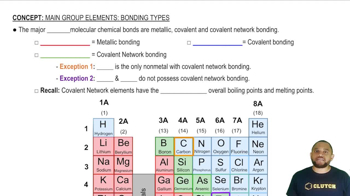Here are the essential concepts you must grasp in order to answer the question correctly.
Molecular Formula
The molecular formula of a compound indicates the types and numbers of atoms present in a molecule. For thalidomide, the formula can be derived from the ball-and-stick model by counting the atoms represented by different colors: carbon (C), hydrogen (H), nitrogen (N), and oxygen (O). This formula provides essential information about the composition of the molecule, which is crucial for understanding its chemical properties and reactivity.
Recommended video:
Determining Molecular Formulas
Bond Types
In chemistry, bonds between atoms can be classified as single, double, or triple bonds, which indicate the number of shared electron pairs between atoms. The ball-and-stick model visually represents these connections, although the question specifies that the lines do not indicate bond types. Understanding bond types is essential for predicting molecular behavior, stability, and interactions with other molecules.
Recommended video:
Lone Pairs
Lone pairs are pairs of valence electrons that are not involved in bonding and are localized on a single atom. In the context of thalidomide, identifying lone pairs is important for understanding the molecule's geometry and reactivity. These electron pairs can influence the shape of the molecule and its interactions with other substances, which is critical in pharmacology and drug design.
Recommended video:




